The study identifies the theoretical mechanisms underlying the interplay between the environment and income inequality, and takes stock of the empirical evidence on the strength of these mechanisms. The conceptual starting point is “social welfare” – the sum of individual utility – which policymakers strive to maximise. This utility is derived from goods and services, from leisure, and from environmental quality. The core idea is that environmental policy doesn’t just influence the third component, but all aspects of welfare. This is because environmental policy measures also change people’s economic situation via prices and incomes – and usually differentially for the rich and the poor.
“This concept has very concrete implications, for example in climate policy,” says PIK researcher Ulrike Kornek, Professor of Environmental and Resource Economics at Kiel University and co-author of the study. “Whether a price premium on fossil fuels can be successfully implemented depends heavily on its effect on the gap between rich and poor. Governments can counteract this by redistributing the revenues, but should be aware of the repercussions on climate outcomes. Moreover, the extent of inequality shapes a society’s willingness to pay for climate protection. And the climate crisis can increase inequality.”
The “equity–pollution dilemma”
The research team examined three channels of interaction. First, they looked at the individual benefits of environmental policy: how do they change with income? The analysis shows, for example, that the poor are less able to invest in climate adaptation, and therefore benefit more from avoided climate damage. Research also shows that fewer excessive heat days tend to increase labour productivity, and thus wages, while reducing the number of work-related accidents. Better harvests and lower food prices are also conceivable. So, there is a logic to seeing good climate policy as promoting social balance.
Second, the research team looked at the costs of environmental policy: how will these be distributed between the rich and the poor? These include costs that are fully or partly passed on to private households (such as higher prices for petrol and heating fuels, which in industrialised countries have an above-average impact on the poor) as well as costs that are initially borne by companies: the gap between rich and poor is also affected when, for example, climate policy impacts a certain industry, thereby affecting its wages and capital returns.
Third, the study explores interactions due to the social flanking of environmental policy: how are the outcomes of climate measures, for example, affected by changes in income inequality? A crucial concept here is the “equity–pollution dilemma”: more money for the poor leads to extra spending on climate-damaging products.
Neither issue can be fully understood in isolation
According to the research team, it is important that more empirical studies systematically record certain “income elasticities” – how a change in household income affects a particular economic behaviour, such as the demand for climate-damaging goods or a person’s willingness to pay for environmental protection. Aside from economic indicators, environmental quality should be measured with improved precision and granularity.
“In both research and policy design, it is important to adequately consider the links between inequality and the environment,” emphasises PIK researcher Kornek. “Neither issue can be fully understood in isolation.”
Article:
Drupp, M., Kornek, U., Meya, J., Sager, L. (2024): The Economics of Inequality and the Environment. – Journal of Economic Literature 63 (3): 840–74. [DOI: 10.1257/jel.20241696]
Weblink to the article:
https://doi.org/10.1257/jel.20241696
Contact:
PIK press office
Phone: +49 331 288 2507
E-Mail: press@pik-potsdam.de
Web: https://www.pik-potsdam.de/en
Social Media: https://www.pik-potsdam.de/socials





